
Racing Around the South Bay on a Sunny Weekend
The weekend of January 8-9, 2022, was a busy — and rather beautiful — one for midwinter yacht racing around San Francisco Bay. But beauty didn’t always translate to great racing conditions, as evidenced by Sequoia Yacht Club’s race in the South Bay.
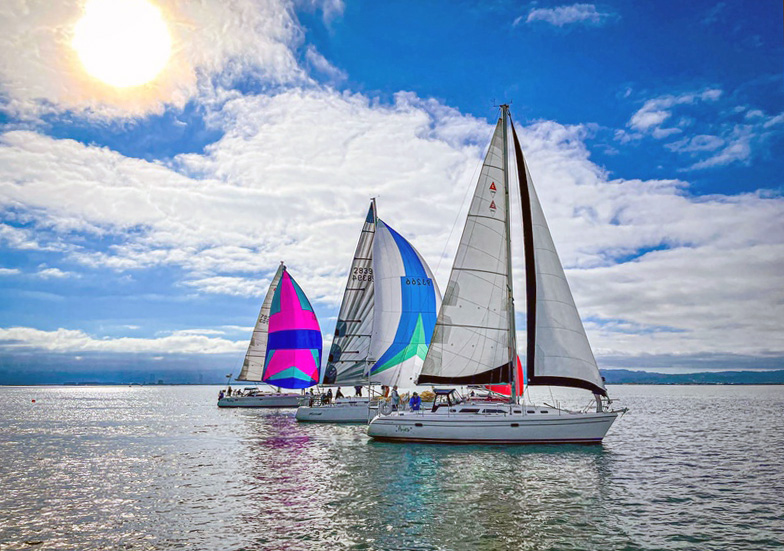
“It was a sunny, crisp Saturday morning with forecast light winds from the north for the Sequoia Winter Series Race 3,” reports Tom Borgstrom of Sequoia YC. “With 20 boats at the line, everyone was eager for a light-wind showdown. Winds had built to about 5 knots and shifted to the south at the 1 p.m. start time. The three fleets, led by the Open 5.70s, set up for a downwind start. It was quite an unusual sight to see full spinnakers heading north to marker X. After rounding X, most boats headed toward deeper water in the channel to pick up the remaining flood current toward marker 2. However, halfway there, the wind died, and boats had a challenge making any distance west to round 2.”
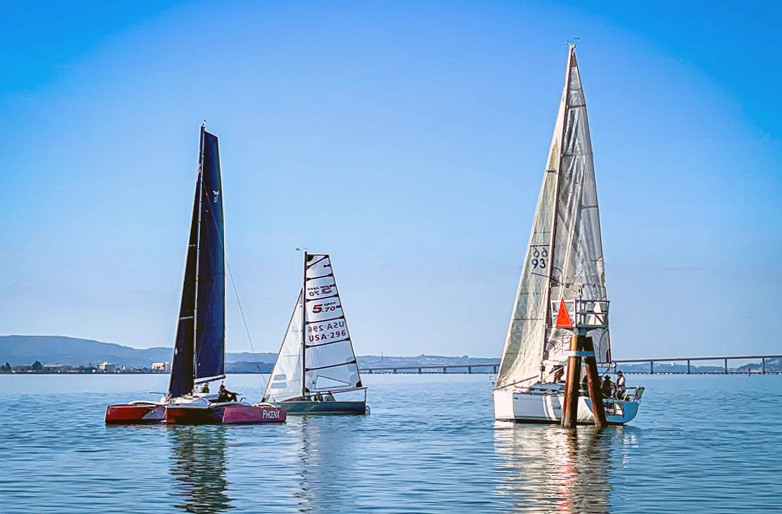
“Many ended up anchoring close to marker 2 with the hope the wind would return,” continues Tom’s report. “It ended up being a very nice socially distanced gathering! Eventually wind picked up enough that most boats were able to round marker 2 and head back north again, but it was a challenge to make any way against the dying flood before the time limit, and no boats were able to finish. Such is winter sailing! But reports are that skippers and crew enjoyed the time on the water in the sun.”
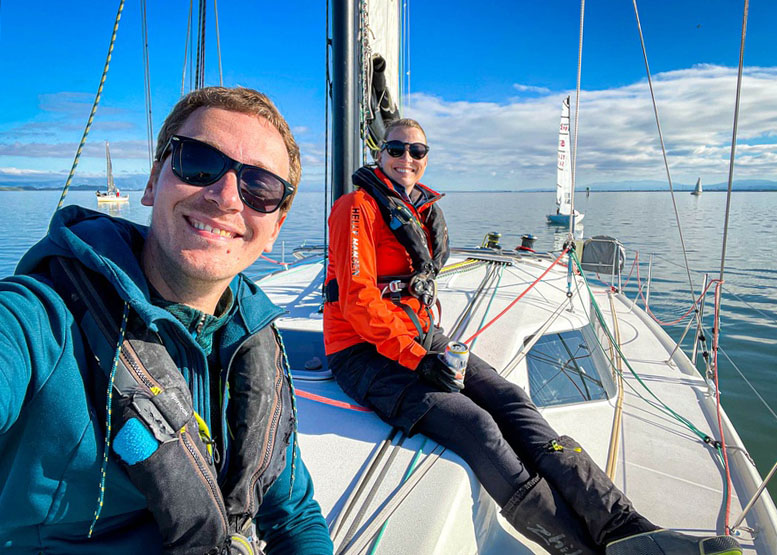
Check the standings of Sequoia YC’s Winter Series and Redwood Cup, or sign up to race, on Jibeset.
We’ll have more reports and photos from the weekend’s races in Racing Sheet in the February issue of Latitude 38. How was your weekend of racing? Feel free to comment below. To find regattas throughout the region, check out the 2022 Northern California Sailing Calendar and YRA Master Schedule.
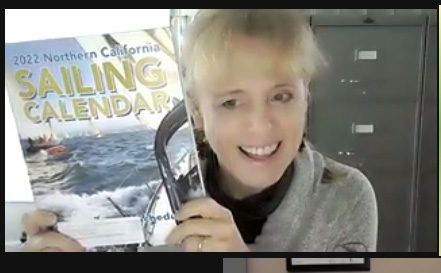
Welcome to Our First Caption Contest(!) for 2022
We’re going overboard with our first Caption Contest(!) of the year. We can only imagine what was going through this young sailor’s mind as he was flying off his dinghy and into the water. Let us know what you come up with in the comments below.
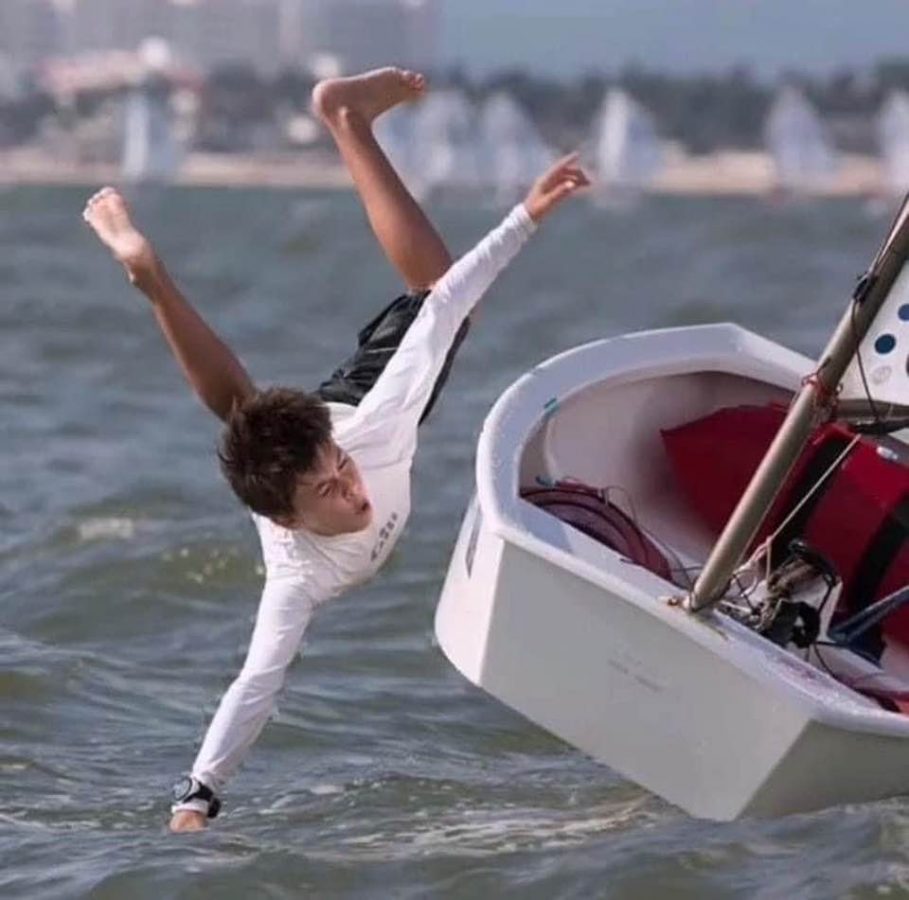
Remember to check out the December Caption Contest(!) winner and runners-up in Latitude 38‘s January issue.
San Francisco on the Bay: Dock, Dine, Stay, Play
Digging It at Hood River Marina on the Columbia River Gorge
The Pacific Northwest has been inundated with snow and rain in recent days. Eric Sanford, from Hood River, OR, sent us these photos of the Hood River Marina, which lies at about latitude 46N and 600 miles north of San Francisco. Eight degrees north and a few miles inland from the Pacific along the Columbia River can make a big difference. Eric wrote, “We had over four feet of snow in a couple of days, then [it] turned to rain and frozen. I spent several hours each day shoveling off my boat, and many around me, since many people couldn’t get down to their boats at the marina with the roads closed. A real mess, but it finally looks to be over. At least for a few days. HA!”
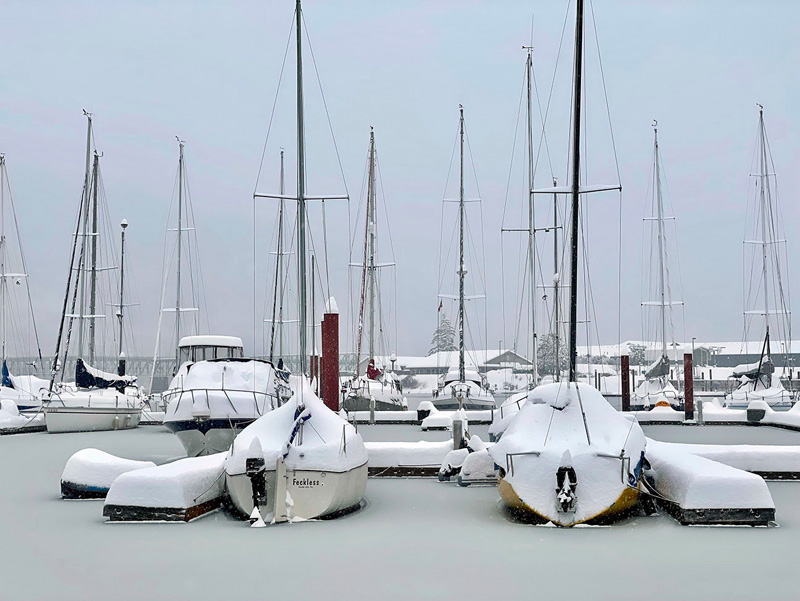
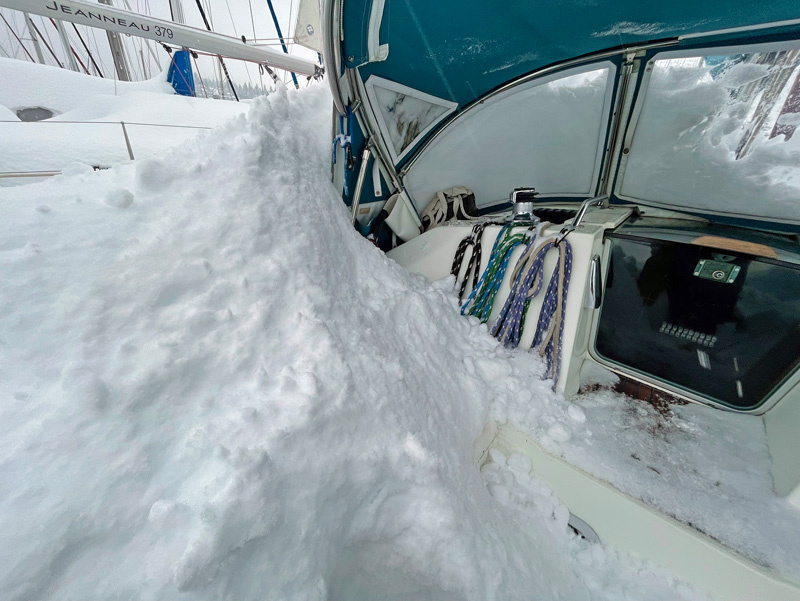
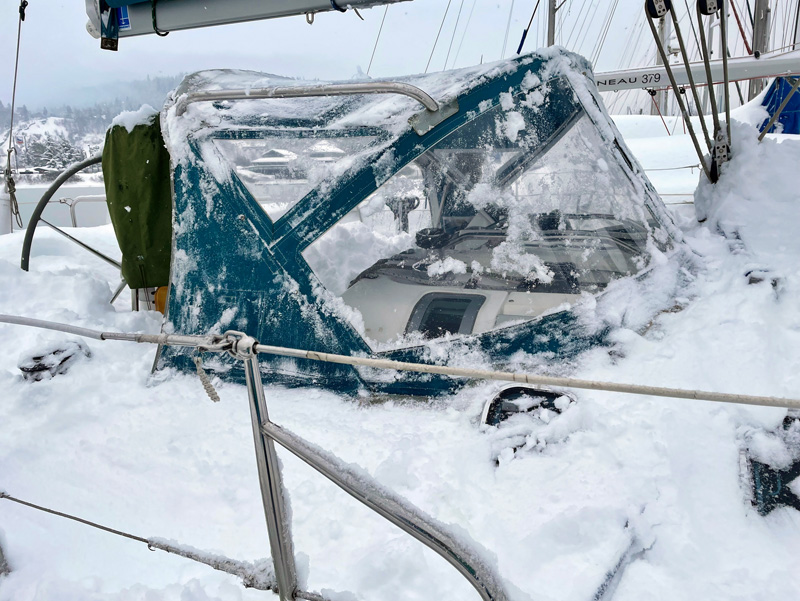
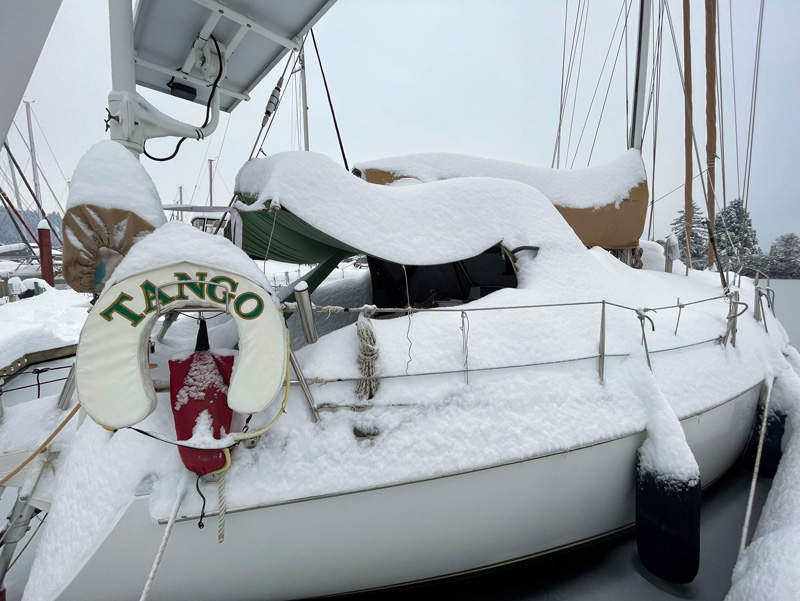
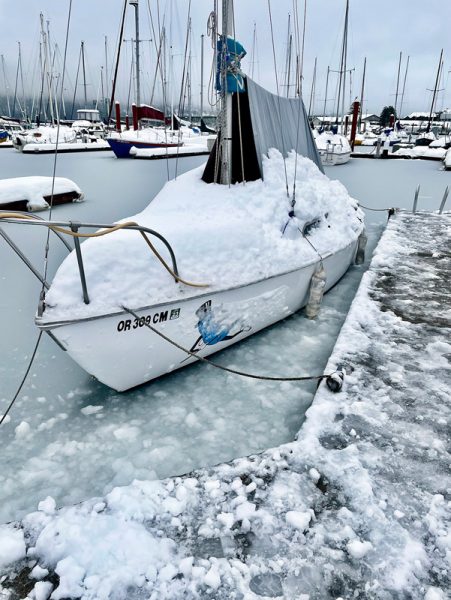
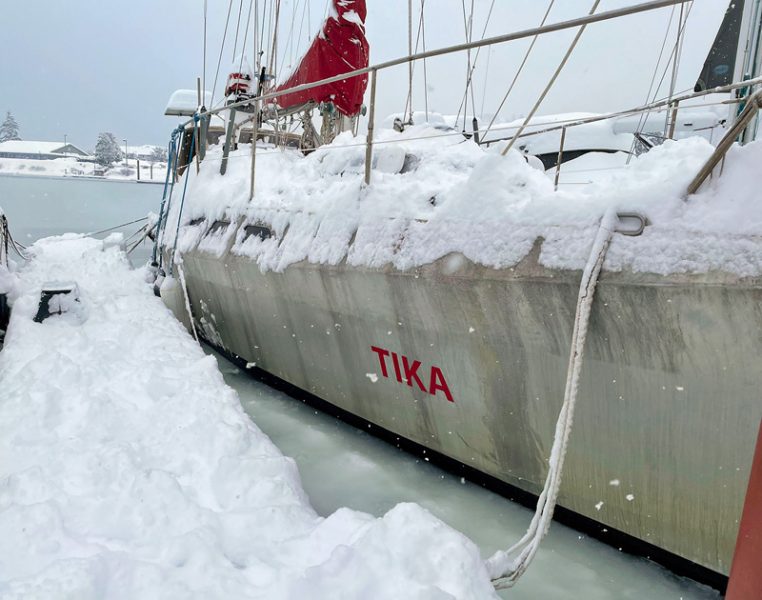
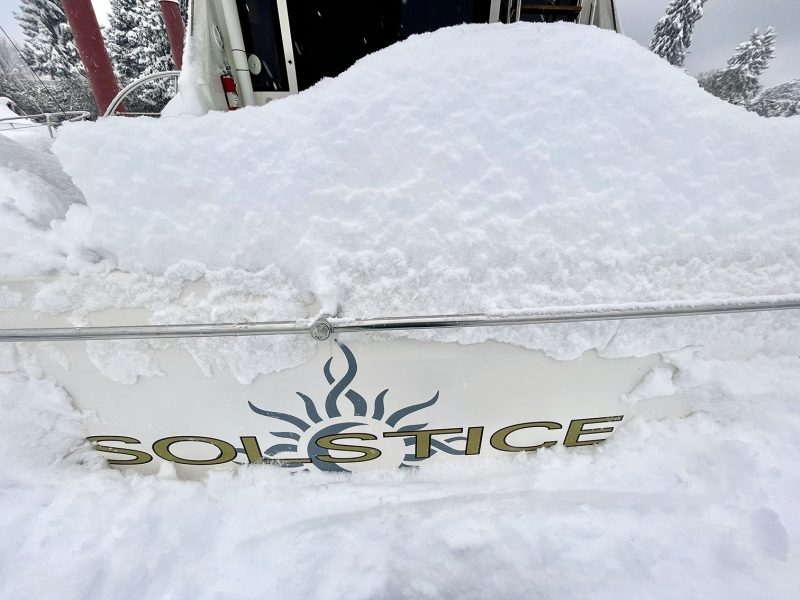
These photos show us why some Pacific Northwest sailors are happy to be in Mexico right now. Or why some Bay Area sailors will be smiling while they’re racing in the sunny CYC, SCYC, BYC or OYC midwinters this coming weekend. But, come summertime, the Columbia River Gorge will be rocking with sailing, kiteboarding, and windsurfing. Plus, this summer, the Columbia Gorge Racing Association will be hosting the RS Aero Worlds at Cascade Locks.
Hanks or a Headfoil? What’s Right for an Express 27?
Latitude 38 reader and Lake Tahoe Express 27 owner Greg Felton wrote in with some appreciative comments, and a question for Max Ebb and Lee Helm about whether he should have hanks or a foil for his new jib. We have a reply from Max and Lee, but thought readers could share their thoughts in the Comments. Greg wrote:
#1: A belated “Thank You!” for taking on Latitude 38 and keeping this gem alive and flourishing for our wonderful sailing community. (It’s our pleasure, Greg. Thanks for your feedback.)
#2: I hope “Max and Lee” can help me with a quandary. I recently purchased an Express 27 (by the way, one of the best designs ever … big enough to handle coastal and transpacific races; small enough to fit on a trailer and keep costs down; light enough to launch with most local hoists; simple enough to easily doublehand; comfortable enough to cruise; agile, fast, and plentiful enough to make racing a gas; and designed by an absolute gem of a person who left us far too early, Carl Schumacher). Most decisions have been easy. One is vexing me — should I go with hanked-on jibs or a headfoil? Turns out there’s a split in the fleet, even among boats finishing at the top. My former headfoil disintegrated during the move of the boat from its former home, so I’m either going to have to buy a new foil or pay to have my jibs converted to hanks. Either way there will be some expense, so let’s just set that entirely aside and weigh the other pros and cons of the options:
Why hanks: 1) Handling when not changing is easier (around the weather mark, or when out with my honey or shorthanding: Just let the halyard go and the jib will drop and remain on deck with no need to go to the bow); 2) Reliability (will never pull out of the feeder or the track).
Why a headfoil: 1) With the exception of time on classic boats (e.g. Shields, ICs, Birds) and the new IC37, that’s what I’m accustomed to; 2) Changes while racing should be faster; 3) Less likely to snag and tear the kite; 4) It must be more aerodynamic, right?
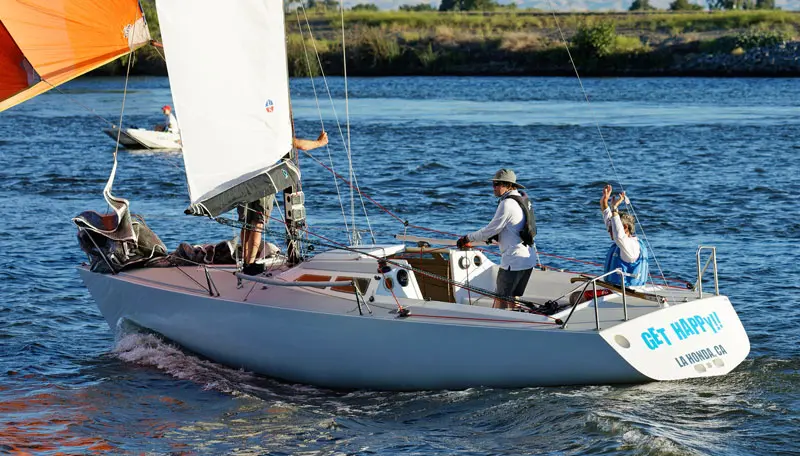
Aerodynamics is turning out to be the swing factor. How much will I be giving up if I opt for hanks?
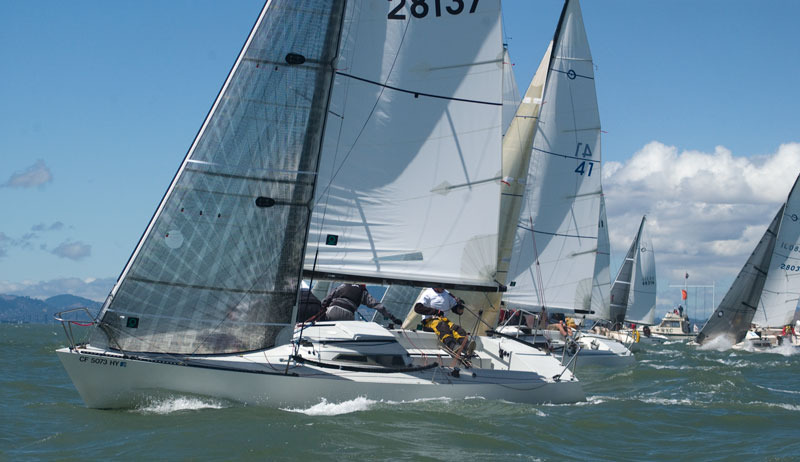
Thanks again for your wonderful rag!
Avid reader,
Greg “Radar” Felton
Stateline, NV (Lake Tahoe)
Max and Lee replied:
Go with the foil for reasons #3 and #3a: Less likely to snag the kite, and also makes a spinnaker wrap around the forestay a little looser and easier to pull out.
But Lee likes foils for reason #4, the aerodynamics: “Gets the effective luff of the jib just a little ahead of the forestay, and fairs in the entry.” Although she can’t come up with any data that prove this is worth the extra weight of the foil.
We both agree that in that size boat you will almost never do a peel change. On the Bay, the legs are short enough to let you change jibs on a downwind leg. On the ocean, the extra minute for a bald-headed change is not a big deal. Second day of Vallejo Race sometimes calls for a jib change, but even then, the time spent with crew weight on the bow is as bad as a bald-headed change — and also reason #2: With a foil, the bald-headed change can be much quicker than if you have to deal with all those hanks.
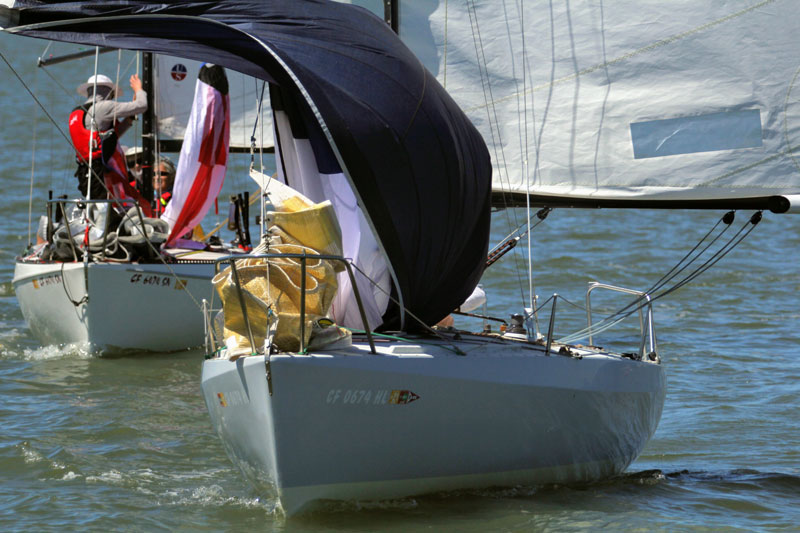
The good news is that with a fractional rig, you can get a lot more range out of each size jib. It’s why a fractional rig should be a high priority in choosing a cruising boat, especially if you insist on roller furling.
The product we both want, and no one seems to make, is a single-luff lightweight headfoil optimized for aerodynamics.
max ebb
What do you think? Let us know in the Comments below.

